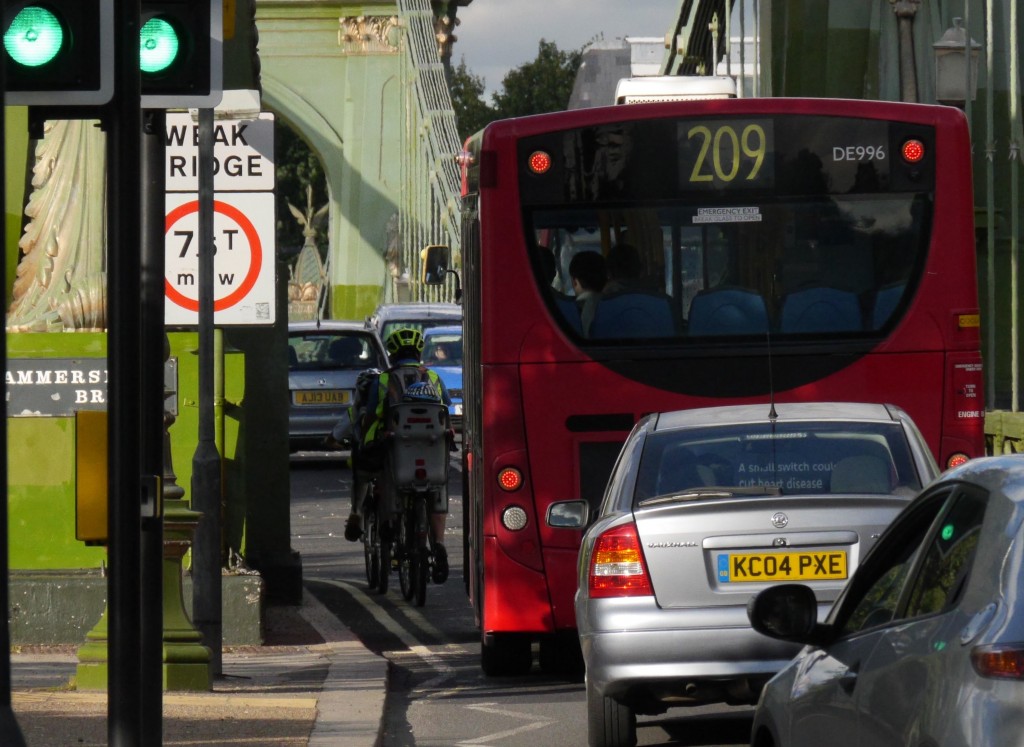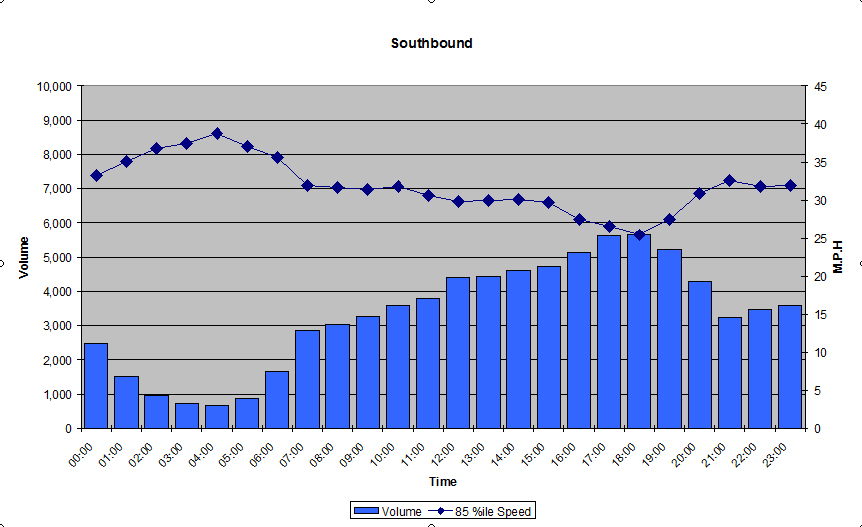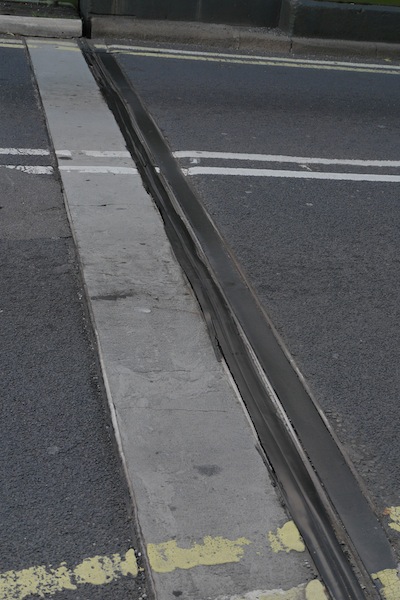
Hammersmith Bridge was built in 1887 and has since 2008 been a Grade II* Listed Structure. It forms a crucial link in the local cycle network but also presents a unavoidable barrier to many potential cycle trips. We have long been demanding that the council take responsibility for both the condition of the surface and the experience of cycling over it which we believe is a deterrent to many.

The road surface is currently made of thin layers of tarmac on top of plates. There is severe degradation to the continuity of the surface both on and between these plates. Which means the surface currently looks like this:

The surface alone means that this section of road requires cyclists to alter their line constantly to avoid the worst of the surface. Places where the roadway has worn clear or where metal bolts are placed atop the surface to hold it on are innumerable and especially risky to cyclists in inclement weather.
In 2012 there was a terrifying accident on the bridge which saw an 18 year old woman on a bike pinned to a pillar by a car which overtook her through one of the narrowest parts of the bridge and failed to give her correct space. Her father Alexis describes this incident well:
I was maybe into 1/3 of the bridge on my way south when I heard a big bang. Turned around and heard my daughter screaming… Dropped my bike and ran to the scene. I could not see my daughter as I could only see a silver car smashed again the main pillar of the bridge and my wife running as fast as possible to get to my daughter out. Another red car was in the middle of the road… My daughter was squeezed between the pillar (the bridge), her bike and the car. She could not exit and get her hand off the pillar.
As you can read it was a truly shocking incident and it is fortunate that it did not have more severe consequences.
We held a flashride over the bridge to draw attention to the issues. As you can see from the video, turnout was strong. Incidentally at the time of the video, the roadway was in slightly better repair, as deterioration has continued to occur.
Not much later on we were able to have a ride with the Leader of the Council, Cllr Nick Botterill, and Cllr Victoria Brocklebank-Fowler on the bridge to discuss the issues with them in June 2012. Chris Bainbridge, Head of Transport Planning provided some figures at this ride which showed that in the morning between 8-9AM cyclists were 1/3rd of traffic over the bridge and about 10% over the day.
Whilst worried about the Thames Tideway Tunnel, our council leader was very keen to talk to the media about the poor condition of the bridge.

Though the council admit that there are a very high number of cyclists using the bridge, they insist that due to the low number of accidents that it is not unsafe. We would counter that given that cyclists are using the footways to avoid the roadway the bridge is clearly dangerous enough that cyclists are either disregarding the rules or choosing not to cycle. We would also invite any councillor who defends the current experience of cycling over this bridge to use it daily as many others do, without alternatives. In 2010, we carried out a survey of over 200 cyclists who use the bridge, 92% found crossing the bridge very scary or sometimes very scary.
There is agreement from the council to repaint the lines on the roadway, which would make the edges of the carriageway straight along the whole bridge and to place bike logos at prominent spots near to some bridge pillars. They believe this would reinforce that cyclists are allowed to hold position on the bridge.
A survey of speeds on the bridge was carried out.


The bridge currently has a speed limit of 30mph which is despite having prominent narrowing at the approaches which slow drivers down to below even 20mph. The above graphs from 2008 show that even the 85th percentile speeds (speeds which all but fastest 15% observe) were often over the existing speed limit of 30mph. Late at night drivers appear to be doing 40mph which won’t be helping the bridge surface. Such speeding is a London-wide problem.
We want to see the roadway made safer and less threatening for cyclists. We want a 20mph speed limit on the bridge and clear markings that indicate to drivers that no overtaking is permitted on the bridge. The surface of the bridge should be smooth and continuous, not full of potholes and lumps. Combined these make this bridge far more dangerous than it should or could be. A much calmer environment would enable this bridge to perform the function of a vital town centre link rather than being treated as a narrow expressway into South West London.
You can follow our earlier campaigning and investigation in the bridge in full on this page of our old site. As this is a shared problem, Richmond LCC also have a post on issues with the bridge.

